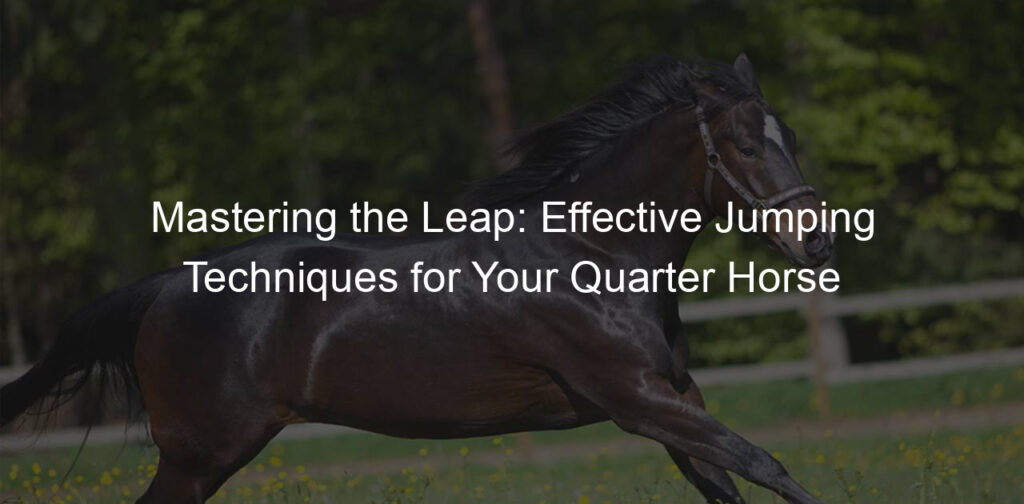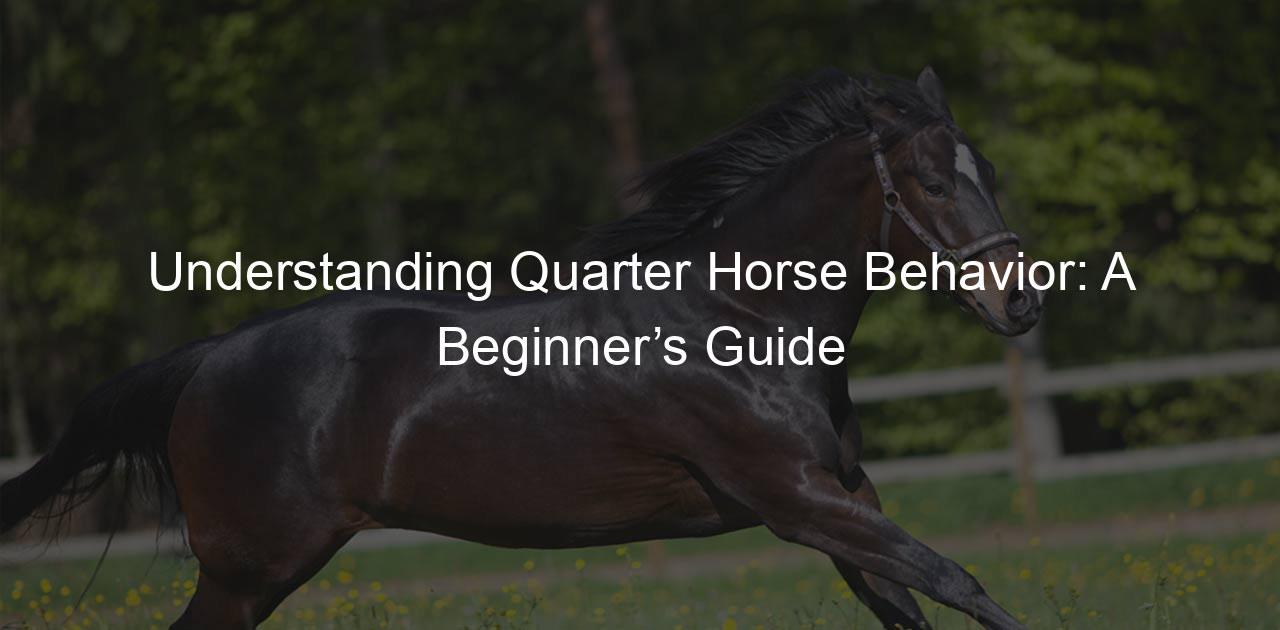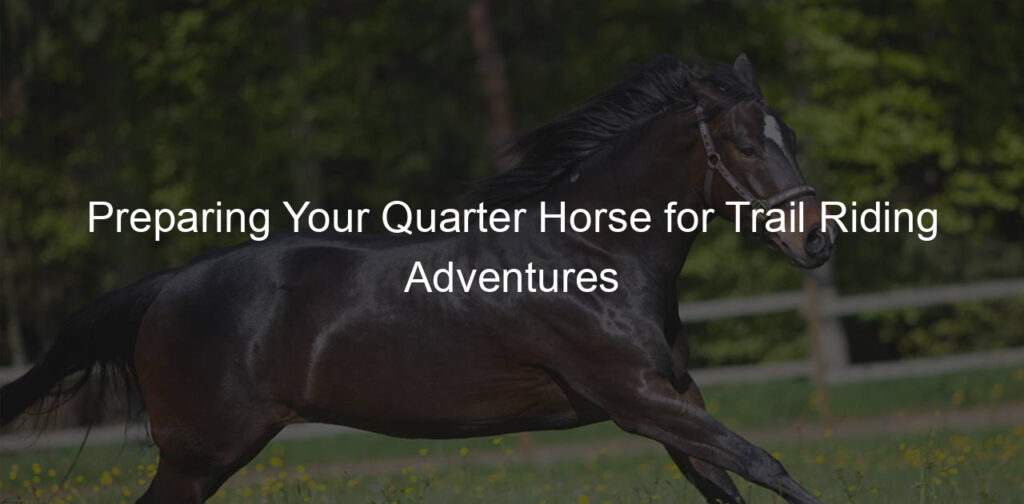Introduction to Quarter Horse Training Techniques
Hey there, horse lovers! Today, we’re going to dive into the exciting world of Quarter Horse training. But before we start, let’s get to know these amazing creatures a bit better.
- Understanding the unique characteristics of Quarter Horses
Did you know that the Quarter Horse is the most popular breed in the United States? That’s right! Wikipedia tells us that these horses are known for their incredible speed over short distances. They’re also super smart and have a calm and steady nature, making them perfect for both work and play.
One fun fact about Quarter Horses is that they come in all sorts of colors, from black to brown to gray, and even palomino! But no matter their color, they all share a muscular body and a compact shape. This makes them super strong and agile, perfect for quick turns and stops.
- The importance of specialized training for Quarter Horses
Now that we know a bit more about Quarter Horses, let’s talk about why specialized training is so important for them. You see, each breed of horse has its own unique traits and abilities. And to bring out the best in our Quarter Horses, we need to train them in a way that suits their natural skills and strengths.
For instance, because of their speed and agility, Quarter Horses excel in events like barrel racing and reining. They’re also great at working with cattle. So, when we train them, we focus on enhancing these abilities. This way, they can perform their best and stay happy and healthy too!
So, are you ready to learn some cool Quarter Horse training techniques? Stay tuned for our next sections where we’ll dive into the basics of jumping training and more. Happy riding!
Jumping Training for Quarter Horses: The Basics
Jumping is an exciting and challenging skill for any horse to learn. For Quarter Horses, known for their speed and agility, it can be a thrilling experience. Let’s dive into the basics of training a Quarter Horse for jumping.
How to Train a Quarter Horse for Jumping
Training a Quarter Horse to jump involves three key steps. Let’s take a look at each one:
- Establishing Trust and Communication
- Building Physical Strength and Endurance
- Introducing Jumping Exercises
Before you start with any physical training, it’s crucial to build a strong bond with your horse. This involves spending quality time with them, understanding their behaviors, and learning to communicate effectively. Trust is the foundation of any successful training program. Learn more about horse behavior here.
Jumping requires a lot of strength and stamina. Start with basic exercises to build your horse’s muscle strength and cardiovascular fitness. This might include long walks, trots, and hill work. Always remember to warm up before any strenuous exercise and cool down afterwards to prevent injuries.
Once your horse is physically ready, you can start introducing jumping exercises. Start with small jumps and gradually increase the height as your horse becomes more confident. Remember, patience is key. It’s better to progress slowly and safely than to rush and risk injury.
Training a Quarter Horse to jump can be a rewarding experience for both you and your horse. Remember, every horse is unique, so what works for one might not work for another. Always listen to your horse and adjust your training program accordingly. Happy jumping!
Quarter Horse Jumping Skills: Key Techniques
Jumping is not just about getting your horse to leap over obstacles. It’s a skill that requires precision, control, and a deep understanding between the horse and its rider. Let’s dive into some key techniques that can help your Quarter Horse master the art of jumping.
- Approach and Take-off Techniques
- Mid-air Control and Landing Techniques
Approaching the jump is the first step. You want your horse to be calm, focused, and at the right speed. Too fast, and they might misjudge the jump. Too slow, and they might not make it over. The take-off is just as important. A good take-off spot is usually about one horse-length away from the jump. This gives your horse enough space to gather their strength and leap over the obstacle.
Once your horse is in the air, it’s all about control. You want them to stay balanced and focused on the landing. The landing should be smooth and controlled, with your horse immediately ready to continue their run. Practice makes perfect, so don’t be discouraged if your horse doesn’t get it right away. With time and patience, they’ll learn to master these techniques.
Remember, every horse is unique and may require different training methods. What works for one horse might not work for another. It’s all about finding what works best for your Quarter Horse and sticking with it. Happy jumping!
Equestrian Training Techniques for Enhancing Jumping Performance
Hey there, horse lovers! We’re going to dive into some really cool equestrian training techniques that can help your Quarter Horse jump higher and better. So, let’s get started!
Horse Jumping Training: Essential Exercises
There are a few key exercises that can really help your horse’s jumping performance. Let’s take a look at them:
- Cavaletti exercises: Cavaletti exercises are a great way to improve your horse’s agility and coordination. They involve setting up small jumps, called cavaletti, at varying distances and heights. The horse then trots or canters over them, learning to adjust its stride and jump height accordingly. It’s a bit like horse gymnastics! Learn more about Cavaletti exercises here.
- Gridwork exercises: Gridwork is another fantastic exercise for improving jumping performance. It involves setting up a series of jumps in a grid pattern. The horse then jumps over them in a specific sequence. This helps the horse learn to approach jumps from the correct angle and take off at the right distance. It’s a bit like a horse obstacle course! Learn more about Gridwork exercises here.
- Jumping courses: Finally, jumping courses are a great way to put all the skills your horse has learned into practice. These courses involve a series of jumps that the horse must navigate in a specific order. It’s a great way to test your horse’s jumping ability and see how much they’ve improved! Learn more about Jumping courses here.
Remember, practice makes perfect! The more your horse practices these exercises, the better they’ll get at jumping. So, keep at it and watch your horse’s performance soar!
Training a Horse for Jumping: Common Mistakes to Avoid
Training a horse for jumping is a fun and rewarding process. But, like anything worth doing, it can be tricky. Here are a couple of common mistakes that you should try to avoid:
- Rushing the training process: It’s easy to get excited and want to see your horse jumping high and fast. But remember, good things take time! Horse training is a gradual process. Trying to rush it can lead to accidents and injuries. It can also scare your horse and make them less willing to jump in the future. So, take it slow and steady. Celebrate the small victories and be patient with the bigger challenges.
- Ignoring the horse’s physical and mental well-being: Horses are not just jumping machines. They have feelings and can get tired, scared, or stressed. Pay attention to your horse’s body language. If they seem tired or scared, give them a break. If they’re not enjoying the training, they won’t perform well. Also, make sure your horse is physically fit for jumping. Regular check-ups with the vet and a good diet can help keep your horse healthy and happy.
Remember, every horse is unique. What works for one might not work for another. So, keep an open mind, be patient, and enjoy the journey of training your horse for jumping!
Quarter Horse Jumping Exercises: A Detailed Guide
Training a Quarter Horse to jump can be a fun and rewarding experience. It’s not just about the leap, but also about the bond you build with your horse. In this guide, we’ll share some effective exercises and tips to help your Quarter Horse become a jumping star!
Quarter Horse Jumping Training Tips
Here are some key tips to keep in mind while training your Quarter Horse to jump:
- Creating a consistent training schedule
- Using positive reinforcement
- Gradually increasing difficulty
Consistency is key when it comes to horse training. Set a regular schedule for your training sessions. This helps your horse understand what to expect and can improve their performance over time. For example, you might decide to train three times a week, focusing on different exercises each day.
Positive reinforcement is a powerful tool in horse training. Reward your horse when they do well. This could be with a treat, a pat, or simply a kind word. This encourages them to repeat the behavior in the future. Remember, patience is important. It might take time, but the results are worth it!
Start with simple jumps and gradually increase the difficulty as your horse becomes more comfortable. This could mean raising the height of the jumps, adding more jumps, or introducing more complex patterns. Always ensure your horse is comfortable and confident before moving to the next level.
Remember, every horse is unique. What works for one might not work for another. The key is to be patient, consistent, and positive. Happy jumping!
Improving Quarter Horse Jumping Performance: Advanced Techniques
Hey there, horse lovers! Let’s dive deeper into the world of Quarter Horse jumping. We’re going to explore some advanced techniques that can help your horse leap to new heights. Ready? Let’s go!
Case Study: Successful Quarter Horse Jumping Training
Let’s look at a real-life example of a Quarter Horse that went from a jumping novice to a true champion. This case study will give you a clear picture of what the training process looks like and the key lessons we can learn from it.
- Overview of the training process
- Key takeaways and lessons learned
Our case study horse, we’ll call him Lightning, started his jumping training at a young age. The first step was to build his strength and endurance with regular exercise and a balanced diet. Then, Lightning’s trainer introduced him to small jumps, gradually increasing the height as he became more confident. The training process also involved lots of practice in different weather conditions and terrains to prepare Lightning for any situation.
So, what can we learn from Lightning’s journey? First, patience is key. It took months of consistent training for Lightning to master jumping. Second, it’s crucial to create a positive and supportive environment for your horse. Rewarding Lightning after a successful jump helped him associate jumping with positive feelings. Lastly, remember that every horse is unique. What worked for Lightning might not work for your horse, so it’s important to tailor your training approach to your horse’s needs and abilities.
There you have it, folks! Advanced techniques and a real-life success story to inspire your Quarter Horse jumping training. Remember, it’s all about patience, positivity, and personalization. Happy jumping!
Conclusion: The Journey to Mastering the Leap
As we wrap up our discussion on Quarter Horse jumping techniques, let’s take a moment to reflect on what we’ve learned and the journey ahead.
- Recap of effective Quarter Horse jumping techniques:
- The ongoing commitment to training and improvement:
We started with the basics, understanding the unique characteristics of Quarter Horses that make them excellent jumpers. We learned about the importance of a good foundation, focusing on balance, rhythm, and stride. We then delved into specific jumping exercises, from simple poles on the ground to more complex gridwork. We also explored advanced techniques, such as the roll-back turn and the flying change, which can significantly enhance a Quarter Horse’s jumping performance.
Mastering the leap is not a one-time event but an ongoing journey. It requires consistent training, patience, and a commitment to improvement. Remember, every horse is unique, and what works for one may not work for another. It’s about understanding your horse, building a strong bond, and continuously striving to enhance your skills and techniques. As the saying goes, “The only place where success comes before work is in the dictionary.” So, keep practicing, keep learning, and keep jumping!
In the end, the journey to mastering the leap with your Quarter Horse is a rewarding one. It’s not just about winning competitions or achieving perfect jumps. It’s about the bond you build with your horse, the lessons you learn along the way, and the joy of seeing your horse grow and excel. So, saddle up and enjoy the ride!









